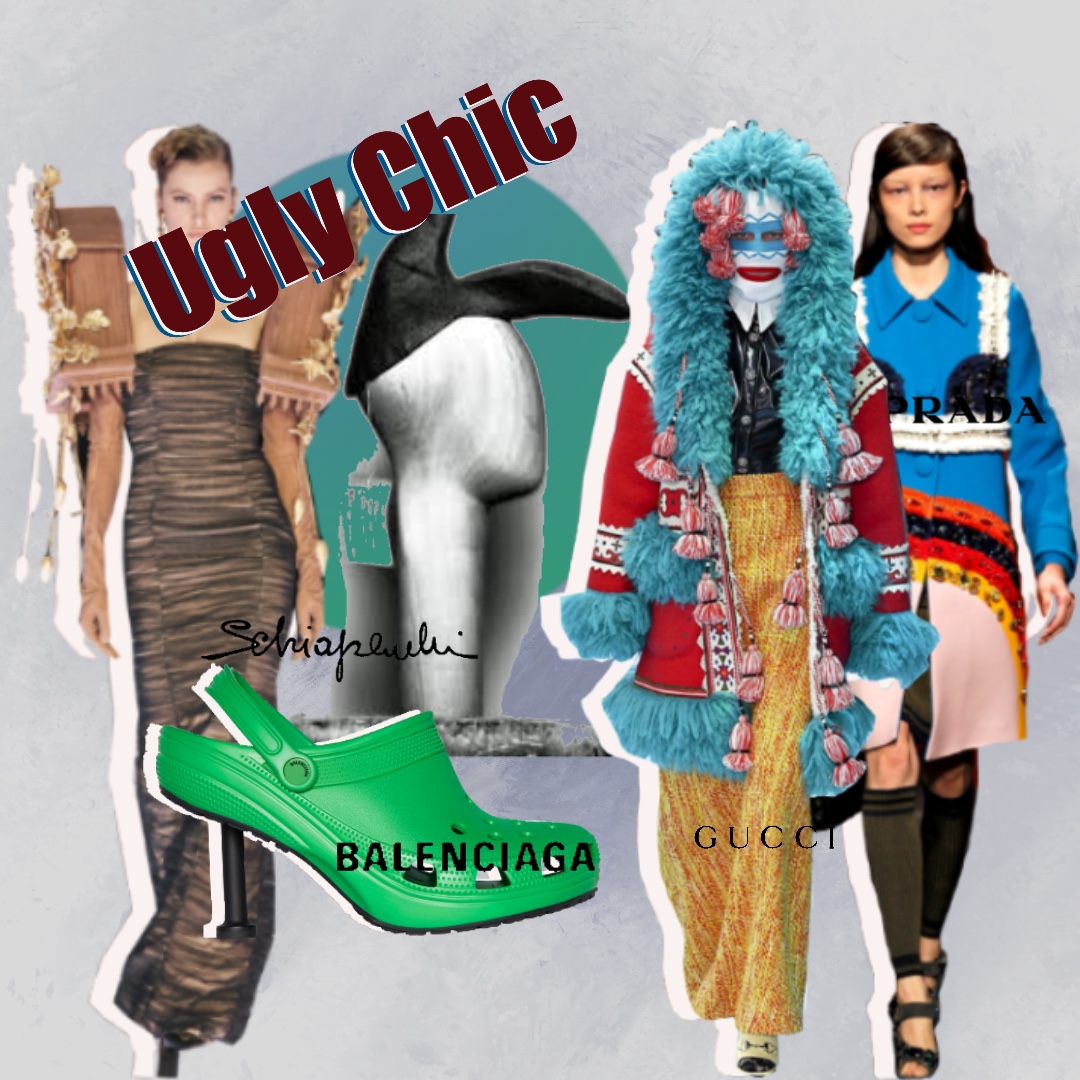GRAPHIC DESIGNER: TINA YU
COPY EDITORS: TAITE KRUEGER, EISHVINDER GILL
“Ugly is attractive, ugly is exciting. Maybe because it is newer.”
Miuccia Prada
Miuccia Prada’s words define large parts of the fashion industry even today.
Some of fashion’s most exciting designs today would have once been deemed ugly, unappealing, or even laughable. But in 2022, ugly style is something that draws in a wide range of people, particularly Gen-Z audiences. Mismatched colours and textures, maximalist accessories, juxtapositions that don’t ‘go’ with each other, and exaggerated silhouettes are in, and they’re not going anywhere.
Take, for instance, TikTok’s obsession with ‘90s Japanese Fashion. The ‘weird girl’ aesthetic hones in on ideas of hyper-individualism and embraces maximalist styles reminiscent of images from Japan’s FRUiTS magazine series. Candy necklaces, clashing colours, chunky and kitschy jewelry, unconventional layering, and other such elements are associated with this aesthetic.
Turning to the runway, Prada’s collections in particular veer away from the time’s fashion trends. “They were either terribly pretty or pretty terrible […],” says Laird Borrelli-Persson about Prada’s Fall 1996 collection, which featured layered tights and stack-heel Mary Janes. Prada’s S/S 1996 collection used colours that hadn’t been in style since the ‘70s, such as dull greens, browns, and deep purples, and blended eccentric patterns with ‘nerdy’ silhouettes. From the layered-socks-and-shoes combination from Spring 2016 Menswear, to styling white underwear under a black sheer dress for Spring 2019, Prada’s pieces have almost always generated controversies within the industry.
In the ready-to-wear industry, brands like Balenciaga and Y/Project are notoriously famous for their ugly pieces, which range from platform Crocs and sock sneakers to exaggerated jean lengths and three-collared sweaters.
It’s almost impossible to argue that the cult following for ugly clothing doesn’t come from the desire to be extraordinary. Ugly chic style is objectively ugly, but incredibly chic. It’s ridiculed, yet subversive. It’s associated with luxury and high fashion. And it’s certainly not predictable.
There’s something else, too, something deeply psychological. Our style and the pieces we own are inherently connected to our emotions and our personalities. To own, and wear something that’s considered ‘ugly’, is ultimately a way of reflecting your style, expressing your own confidence, and bringing yourself joy.
Some of it may even come from nostalgia for the mid-to-late 2000s, where celebrities on the red carpet would often wear mismatched or ‘ugly’ pieces, outfitting themselves solely based on what they liked, and what reflected their style.
But what happens to ugly chic clothing when everyone thinks it’s appealing?
Well, an ‘ugly’ outfit is chic only because the designer, stylist, or individual wearing it likes it. And it’s ‘ugly’ because it sets itself apart from the traditional fashion industry. As a result, there can’t be a wrong way to do ugly chic, as these definitions change from person to person.
Perceiving ‘ugly’ clothing as stylish or cool doesn’t erase its true core: it allows people to experiment with fashion without being concerned with trends.


























